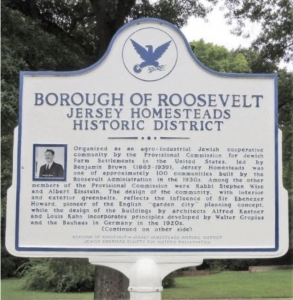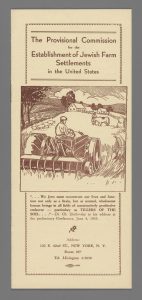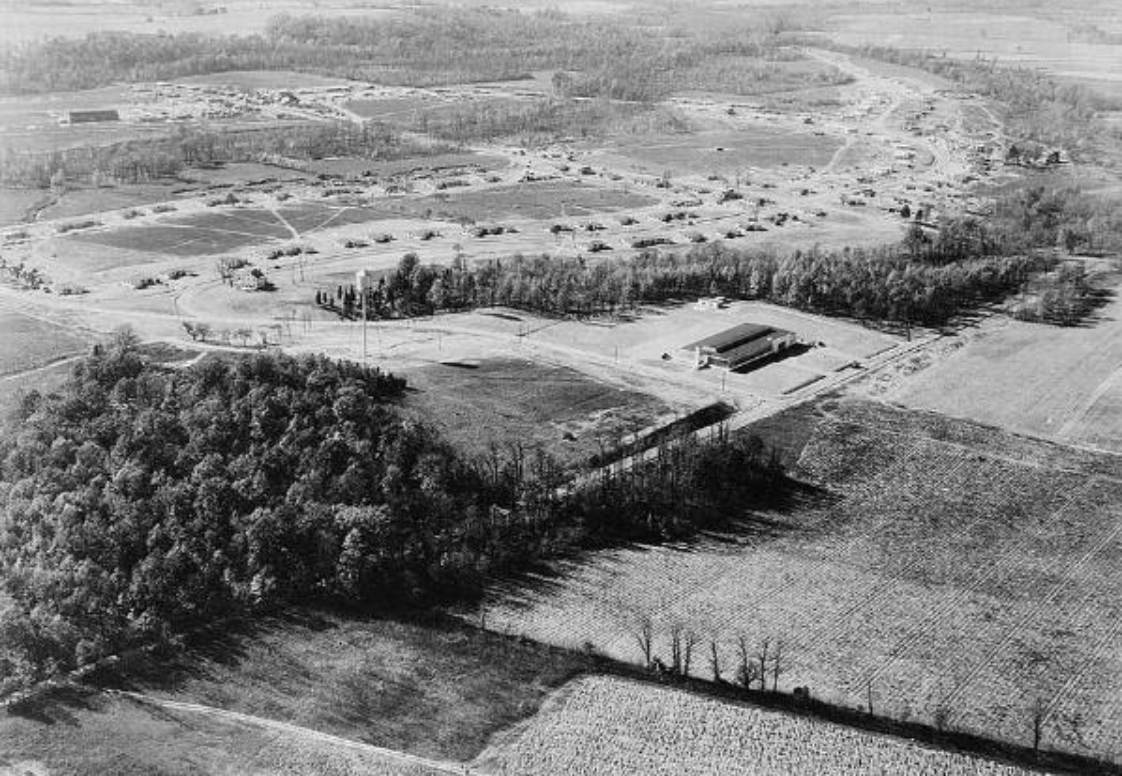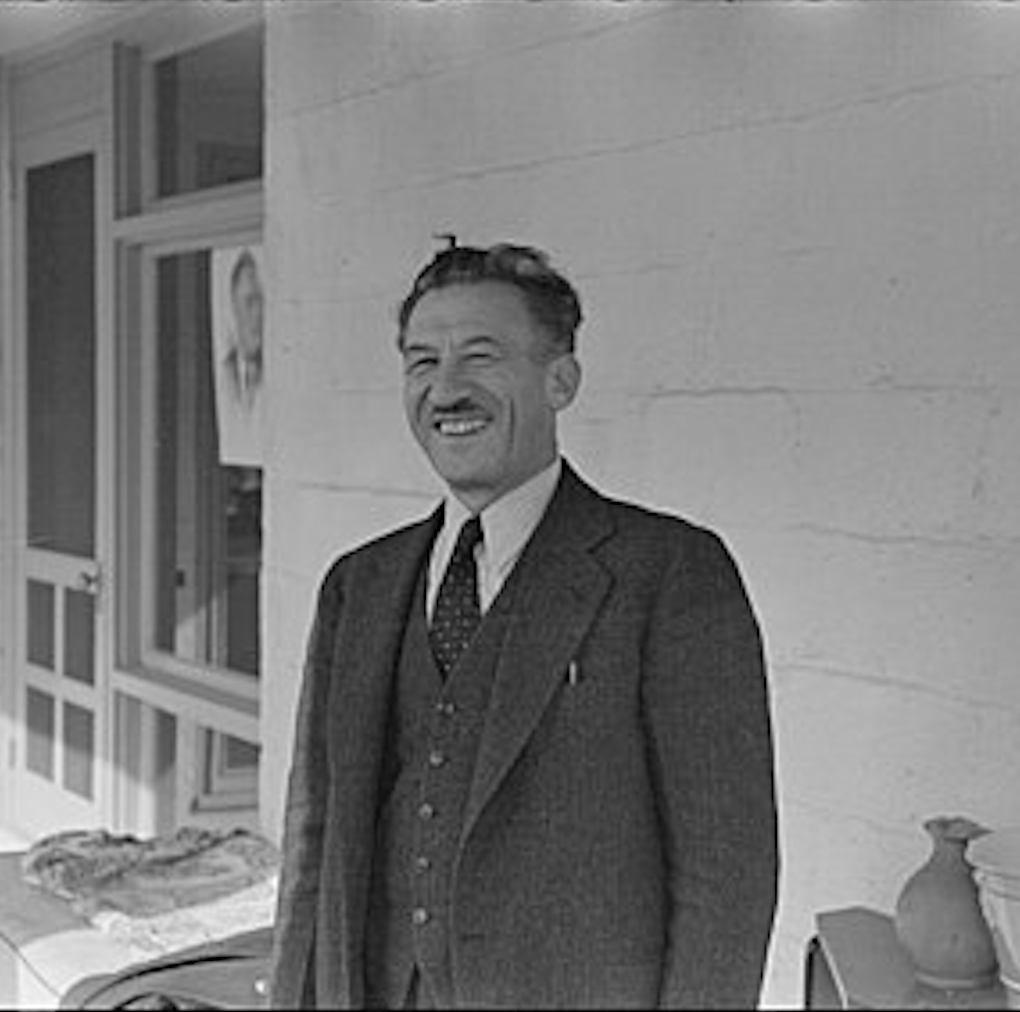Jewish farming is woven into the fabric of the Garden State and the country in many ways. A fascinating moment in this rural history came during the dark days of the Depression. Starting in 1933, the FDR Administration launched the New Deal to revive the staggering national economy and public spirit. Among those programs was the National Industrial Recovery Act (NIRA), meant to decentralize industry from congested cities and enable those laborers to augment their income through farming. This innovative policy resulted in the founding of 99 planned “Agro-Industrial” communities around the United States.
In response to NIRA, a Jewish communal activist and successful poultry merchant named Benjamin Brown established the Provisional Commission for Jewish Farm Settlements in the United States. The Commission’s members included prominent Jews like Albert Einstein and Rabbi Steven Wise, as well as representatives from Jewish charitable and labor organizations.
Click on the image below to view it in greater detail.
The Commission campaigned with the successor agency of NIRA for an allotment. In short order, Brown and his colleagues purchased 1,200 acres of land in Hightstown, Monmouth County. They named this tract (and it’s cooperative community) Jersey Homesteads in 1936. New Jersey incorporated the borough in May 1937.
Aerial photo of Jersey Homesteads, 1930s.
Benjamin Brown – born Benjamin Lipshits in Russia – a graduate of the [Jewish] National Farm School came to this project in part because of a visit several years earlier to Birobidzhan, in the USSR.
Evidently, Brown believed that the same kind of mixed industrial and agricultural community promoted by the Kremlin offered a solution to the plight of poor Jews already in the United States and those fleeing fascism in Europe. Jersey Homesteads was not Brown’s first journey into Jewish farming; he had been a founder of the Clarion in central Utah from 1910 until the colony disbanded in 1915.
Benjamin Brown, 1885-1939
A few years after Clarion disbanded, Brown and the few remaining Jewish colonists formed the Utah Poultry Producers Cooperative Association, which later expanded into the Intermountain Farmers Association. This was one of many stories of Jewish farmers in the cooperative agricultural movement in the Americas. For more examples, see the Cooperative page in this exhibit.
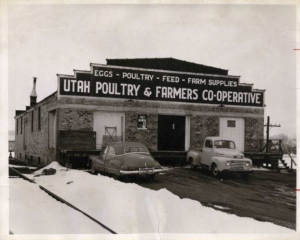
Jersey Homesteads included a mixed crop cooperative farm, a cooperative factory associated with the ILGWU and cooperative retail stores. Most members of the community were former needle trade workers from New York and Philadelphia, many of whom were committed socialists.
The several hundred community members focused on farming during the growing season, while industry operated during the off-season. Its factory catered to the existing skills of Jersey Homestead’s residents – the garment industry.
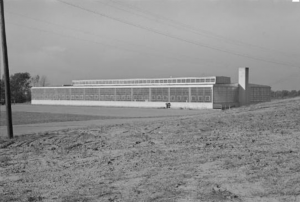
Newly constructed clothing factory, Jersey Homesteads, November 1936
Low profits forced closure of the factory in the late 1930s and the farming cooperative disbanded in 1940. Jersey Homesteads was renamed “Roosevelt” in 1945 following the President’s death.
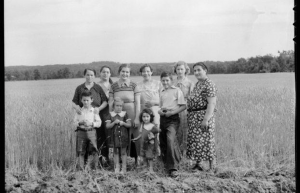
Adult and young members of the Jersey Homesteads Cooperative Farm. Photographed by Dorothea Lange on assignment from the Farm Security Administration, 1936
Despite the failure of its cooperatives, Roosevelt continued to live on as a coherent Jewish community with some of the original colonists continuing on as agricultural homesteaders. During the New Deal period, the community was able to access federal programs that helped temporarily buoy its cooperative associations. Longer lasting benefits for Roosevelt came from WPA funds that brought cultural richness to the community. The most famous of these landmarks was a huge mural (commissioned by the Farm Security Administration) by the artist Ben Shahn (1898-1969).

Shahn’s mural at the Roosevelt School, 1937-38, featuring images of the Jewish immigrant experience, including Albert Einstein, a friend of the artist and short-term resident of Jersey Homesteads.
To view the mural in greater detail, click here to visit an article from the
Graphic Arts Collection, Dept. of Special Collections,
Firestone Library, Princeton University

